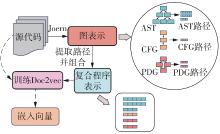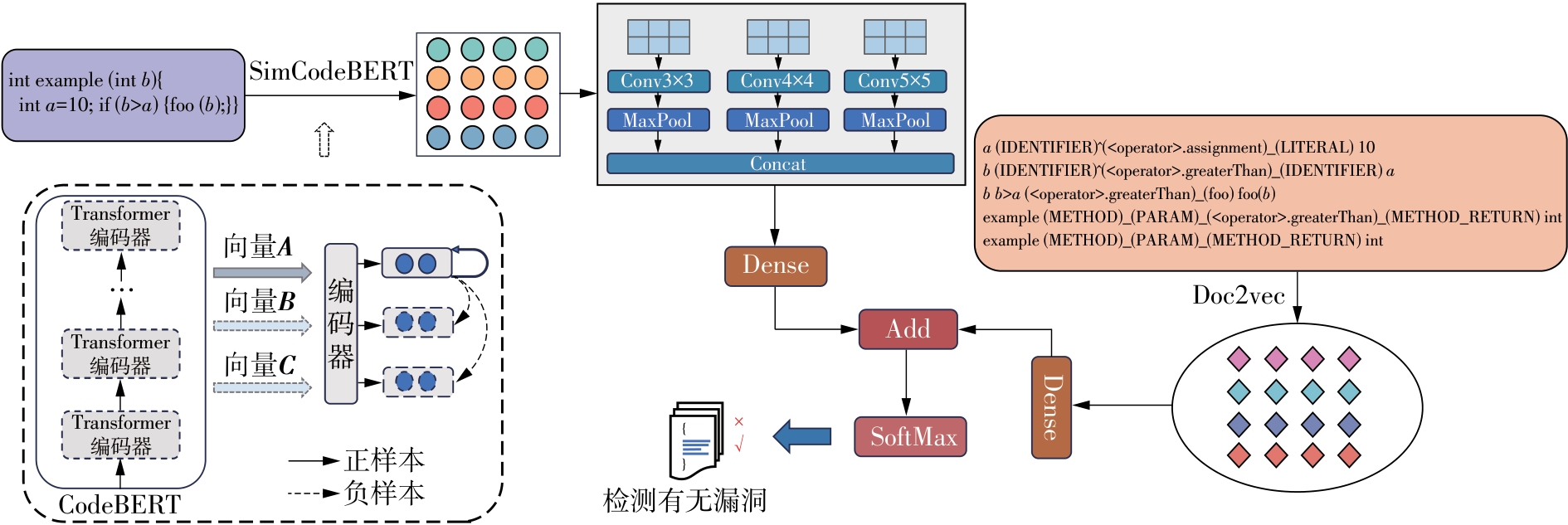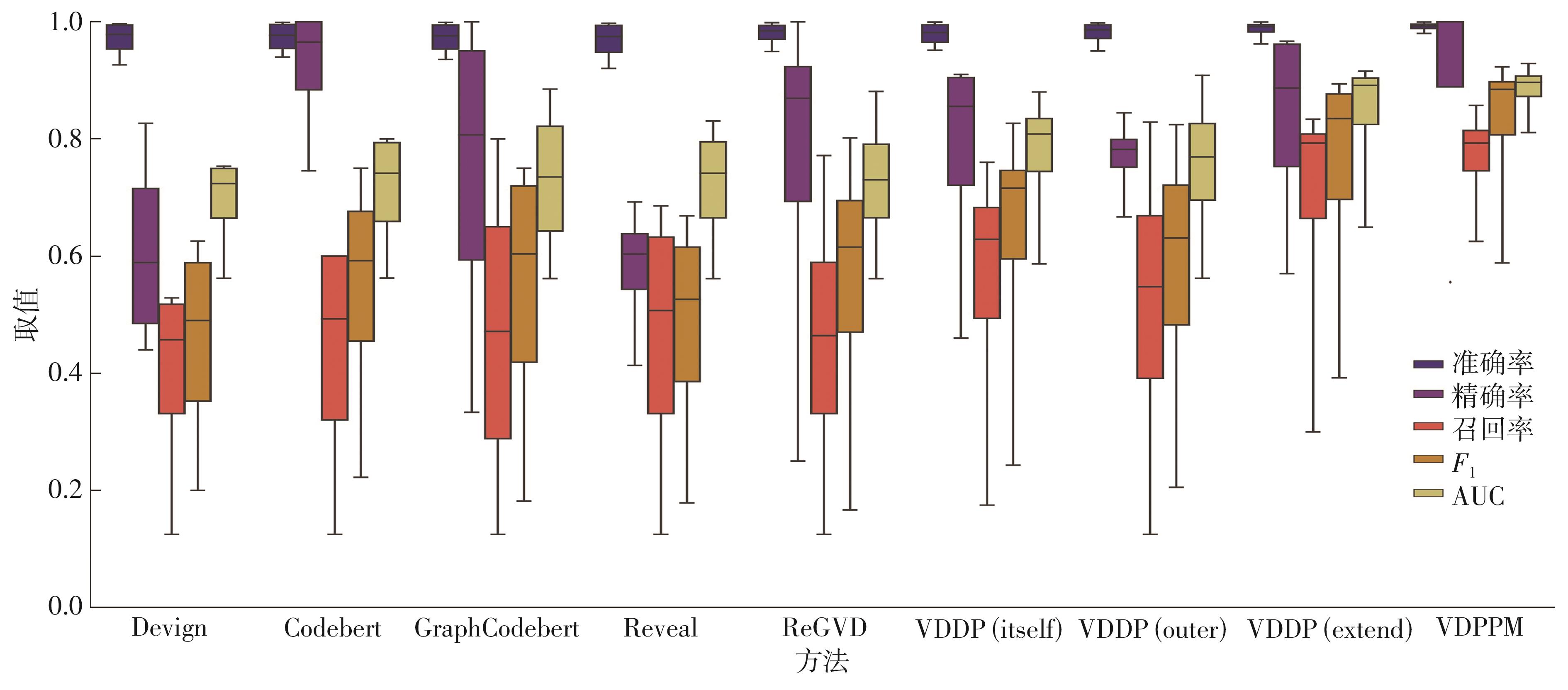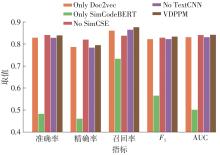| 1 |
WU J .Literature review on vulnerability detection using NLP technology[EB/OL].(2021-04-22)[2024-03-03]..
|
| 2 |
LIN G, WEN S, HAN Q L,et al .Software vulnerability detection using deep neural networks:a survey[J].Proceedings of the IEEE,2020,108(10):1825-1848.
|
| 3 |
ZOU D, WANG S, XU S,et al .μVulDeePecker:a deep learning-based system for multiclass vulnerability detection[J].IEEE Transactions on Dependable and Secure Computing,2021,18(5):2224-2236.
|
| 4 |
YAMAGUCHI F, GOLDE N,ARP D,et al .Modeling and discovering vulnerabilities with code property graphs[C]∥Proceedings of 2014 IEEE Symposium on Security and Privacy.San Jose:IEEE,2014:590-604.
|
| 5 |
VOTIPKA D, STEVENS R, REDMILES E,et al .Hackers vs testers:a comparison of software vulnerability discovery processes[C]∥Proceedings of 2018 IEEE Symposium on Security and Privacy.San Francisco:IEEE,2018:374-391.
|
| 6 |
JIANG J, WEN S, YU S,et al .Identifying propagation sources in networks:state-of-the-art and comparative studies[J].IEEE Communications Surveys & Tutorials,2017,19(1):465-481.
|
| 7 |
WU T, WEN S, XIANG Y,et al .Twitter spam detection:survey of new approaches and comparative study[J].Computers & Security,2018,76:265-284.
|
| 8 |
SCANDARIATO R, WALDEN J, HOVSEPYAN A,et al .Predicting vulnerable software components via text mining[J].IEEE Transactions on Software Engineering,2014,40(10):993-1006.
|
| 9 |
RUSSELL R, KIM L, HAMILTON L,et al .Automated vulnerability detection in source code using deep representation learning[C]∥Proceedings of 2018 17th IEEE International Conference on Machine Learning and Applications.Orlando:IEEE,2018:757-762.
|
| 10 |
LIN G, XIAO W, ZHANG J,et al .Deep learning-based vulnerable function detection:a benchmark[C]∥ZHOU J,LUO X,SHEN Q,et al.Proceedings of the 21st International Conference on Information and Communications Security.Cham:Springer International Publishing,2020:219-232.
|
| 11 |
YAMAGUCHI F, LOTTMANN M, RIECK K .Gene-ralized vulnerability extrapolation using abstract syntax trees[C]∥Proceedings of the 28th Annual Computer Security Applications Conference.Orlando:Association for Computing Machinery,2012:359-368.
|
| 12 |
ZHANG J, WANG X, ZHANG H,et al .A novel neural source code representation based on abstract syntax tree[C]∥Proceedings of 2019 IEEE/ACM 41st International Conference on Software Engineering.Montreal:IEEE,2019:783-794.
|
| 13 |
ALON U, ZILBERSTEIN M, LEVY O,et al .A general path-based representation for predicting program properties[C]∥Proceedings of the 39th ACM SIGPLAN Conference on Programming Language Design and Implementation.New York:Association for Computing Machinery,2018:404-419.
|
| 14 |
ALON U, ZILBERSTEIN M, LEVY O,et al .code2vec:learning distributed representations of code[J].Proceedings of the ACM on Programming Languages,2019,3(POPL):40/1-29.
|
| 15 |
ALON U, BRODY S, LEVY O,et al .code2seq:generating sequences from structured representations of code[C]∥Proceedings of the 7th International Confe-rence on Learning Representations.New Orleans:[s.n.],2018:6969-6991.
|
| 16 |
VAGAVOLU D, SWARNA K C, CHIMALAKONDA S .A mocktail of source code representations[C]∥Proceedings of 2021 36th IEEE/ACM International Conference on Automated Software Engineering.Melbourne:IEEE,2021:1296-1300.
|
| 17 |
LI Y, WANG S, NGUYEN T N,et al .Improving bug detection via context-based code representation learning and attention-based neural networks[J].Proceedings of the ACM on Programming Languages,2019,3(OOPSLA):162/1-30.
|
| 18 |
ZHOU Y, LIU S, SIOW J,et al .Devign:effective vulnerability identification by learning comprehensive program semantics via graph neural networks[C]∥ Proceedings of the Coference on Advances in Neural Information Processing Systems.Vancouver:Curran Associates,Inc,2019:10197-10207.
|
| 19 |
KIM S,WOO S, LEE H,et al .VUDDY:a scalable approach for vulnerable code clone discovery[C]∥ Proceedings of 2017 IEEE Symposium on Security and Privacy.San Jose:IEEE,2017:595-614.
|
| 20 |
LI Z, ZOU D, XU S,et al .VulPecker:an automated vulnerability detection system based on code similarity analysis[C]∥Proceedings of the 32nd Annual Conference on Computer Security Applications.New York:Association for Computing Machinery,2016:201-213.
|
| 21 |
PRADEL M,SEN K .DeepBugs:a learning approach to name-based bug detection[J].Proceedings of the ACM on Programming Languages,2018,2(OOPSLA):147/1-25.
|
| 22 |
LI Z, ZOU D, XU S,et al .SySeVR:a framework for using deep learning to detect software vulnerabilities[J].IEEE Transactions on Dependable and Secure Computing,2022,19(4):2244-2258.
|
| 23 |
CHAKRABORTY S, KRISHNA R, DING Y,et al .Deep learning based vulnerability detection:are we there yet?[J].IEEE Transactions on Software Engineering,2022,48(9):3280-3296.
|
| 24 |
CAO S, SUN X, BO L,et al .BGNN4VD:constructing bidirectional graph neural-network for vulne-rability detection[J].Information and Software Technology,2021,136:106576/1-11.
|
| 25 |
WAN T, LU L, XU H,et al .Software vulnerability detection via Doc2vec with path representations[C]∥ Proceedings of 2023 IEEE 23rd International Confe-rence on Software Quality,Reliability,and Security Companion.Chiang Mai:IEEE,2023:131-139.
|
| 26 |
KIM Y .Convolutional neural networks for sentence classification[C]∥Proceedings of 2014 Conference on Empirical Methods in Natural Language Processing.Doha:Association for Computational Linguistics,2014:1746-1751.
|
| 27 |
LU S, GUO D, REN S,et al .CodeXGLUE:a machine learning benchmark dataset for code understanding and generation[C]∥VANSCHOREN J,YEUNG S.Proceedings of the Conference on Neural Information Processing Systems Track on Datasets and Benchmarks 1 (NeurIPS Datasets and Benchmarks 2021).Online:MIT Press,2021:31/1-14.
|
| 28 |
FENG Z, GUO D, TANG D,et al .CodeBERT:a pre-trained model for programming and natural languages[C]∥COHN T,HE Y,LIU Y.Findings of the Association for Computational Linguistics:Proceedings of EMNLP 2020.Online:Association for Computational Linguistics,2020:1536-1547.
|
| 29 |
GUO D, REN S, LU S,et al .GraphCodeBERT:pre-training code representations with data flow[C]∥ Proceedings of the International Conference on Learning Representations.Online:Washington DC,2020:1-18.
|
| 30 |
NGUYEN V A, NGUYEN D Q, NGUYEN V,et al .ReGVD:revisiting graph neural networks for vulne-rability detection[C]∥Proceedings of the ACM/IEEE 44th International Conference on Software Engineering:Companion Proceedings.Pittsburgh:ACM,2022:178-182.
|
| 31 |
GAO T, YAO X, CHEN D .SimCSE:simple contrastive learning of sentence embeddings[C]∥MOENS M F,HUANG X,SPECIA L,et al.Proceedings of 2021 Conference on Empirical Methods in Natural Language Processing.Online and Punta Cana:Association for Computational Linguistics,2021:6894-6910.
|









